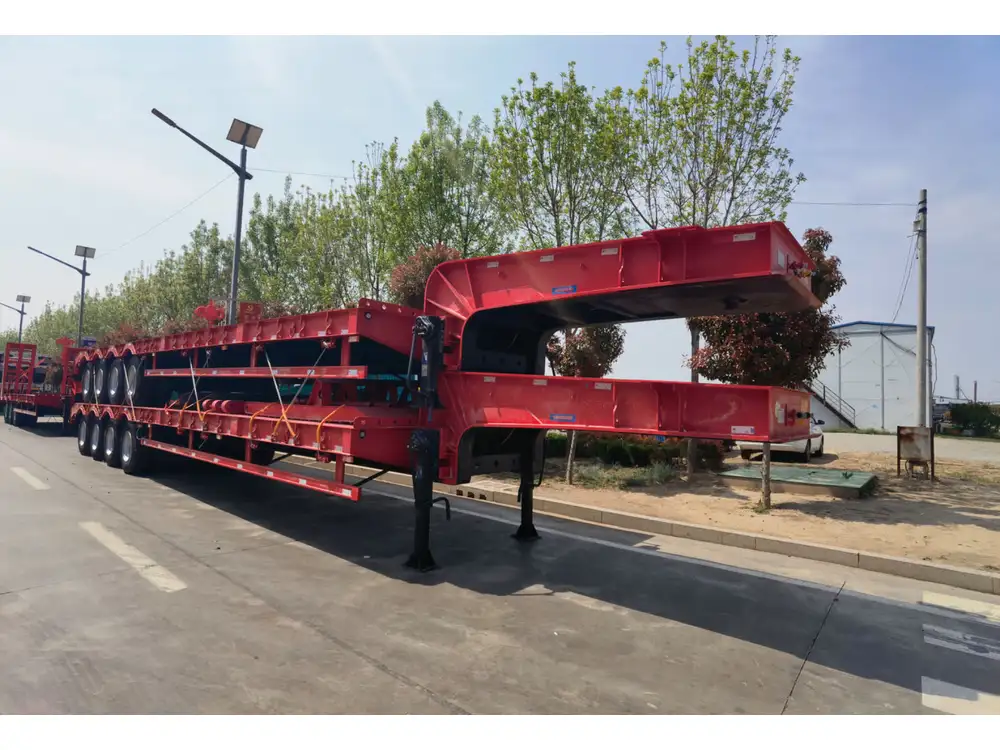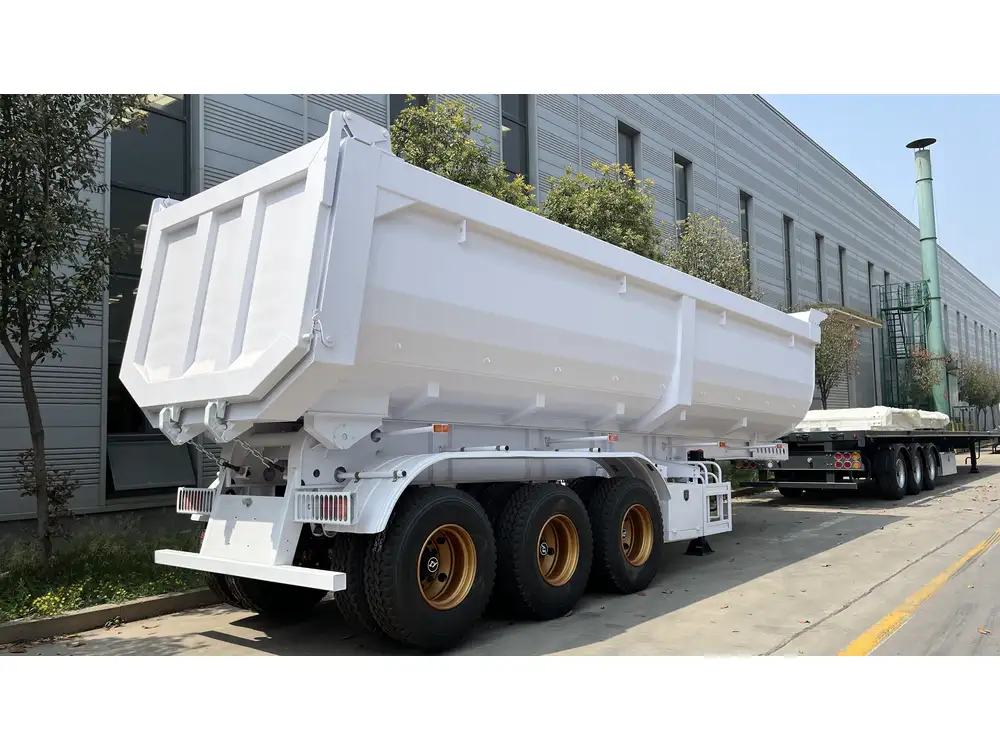As a leading manufacturer of semi-trailers, we understand the importance of having reliable equipment. Among the various components of a dump trailer, the box lock is pivotal. This article provides a detailed, step-by-step guide on how to fix a dump trailer box lock, ensuring that your trailer continues to operate efficiently.
Understanding the Dump Trailer Box Lock Mechanism
Key Components of the Box Lock
To effectively address issues with the box lock, it’s essential to familiarize yourself with its components. A typical dump trailer box lock generally consists of:
- Locking Mechanism: Provides security when the trailer is not in use.
- Latch: Engages the box to keep it secure.
- Key or Handle: Allows the operator to lock or unlock the mechanism.
- Hinge: Connects the latch to the trailer body.

Common Types of Box Locks
- Padlock Mechanisms: Allows for greater flexibility and security with universal padlocks.
- Integrated Lock Systems: Built directly into the trailer’s design, offering a streamlined appearance and reducing potential vulnerabilities.
Understanding these components helps in diagnosing the problem effectively.
Identifying Issues with the Box Lock
To fix a malfunctioning box lock, we need to first establish the nature of the problem. Common issues include:
| Issue | Symptoms | Potential Causes |
|---|---|---|
| Lock Won’t Engage | Key or handle turns but does not latch | Rust or debris in the mechanism |
| Key is Stuck | Key turns with resistance or does not turn at all | Worn lock cylinder or foreign debris |
| Lock is Loose | Box lock moves when pushed, compromising security | Loose screws or damaged latch |
| Rust or Corrosion | Visible rust or difficulty in operation | Weather exposure and lack of maintenance |
| Misalignment | Lock does not align with the latch properly | Trailer frame distortion or adjustment needed |
Step-by-Step Guide to Fixing Common Box Lock Issues

1. Fixing a Box Lock That Won’t Engage
Tools Required:
- WD-40 or penetrating oil
- Clean cloth
- Screwdriver
Process:
- Inspect the Area: Check around the lock for any visible obstructions or rust.
- Apply Lubricant: Spray WD-40 on the lock mechanism to remove rust and debris. Allow it to sit for a few minutes.
- Clean the Lock: Use a clean cloth to wipe away excess lubricant.
- Test the Lock: Insert the key or use the handle to engage the latch. If it works smoothly now, the issue is resolved. If not, consider further disassembly.

2. Resolving a Stuck Key
Tools Required:
- Graphite powder (lock lubricant)
- Pliers (if necessary)
Process:
- Identify the Issue: Carefully assess if the key is genuinely stuck or if the mechanism is resisting.
- Lubricate: Apply graphite powder into the lock mechanism. Avoid using oil-based lubricants, as they can attract dirt.
- Try the Key Again: Gently wiggle the key while applying downward pressure. If it’s still stuck, avoid forcibly removing it as this may break the key.
- Remove with Pliers: If necessary, use pliers to gently pull the key out, being cautious not to damage the lock cylinder.

3. Tightening a Loose Lock
Tools Required:
- Wrench or socket set
- Screwdriver
Process:
- Inspect the Lock: Identify any screws or bolts that may have come loose.
- Tighten Fasteners: Utilizing the appropriate tool, securely fasten the lock into its housing until it is stable.
- Check Functionality: Engage and disengage the lock multiple times to ensure smooth operation. If necessary, repeat the tightening process.

4. Dealing with Rust or Corrosion
Tools Required:
- Sandpaper or wire brush
- Rust inhibitor spray
- Protective gloves
Process:
- Scrub the Affected Area: Use sandpaper or a wire brush to gently remove rust from the lock and surrounding areas.
- Apply a Rust Inhibitor: After cleaning, apply a rust inhibitor to protect against future corrosion.
- Regular Maintenance: Schedule regular inspection and cleaning to prevent rust from accumulating.

5. Correcting Misalignment Issues
Tools Required:
- Measuring tape
- Level
- Wrench
Process:
- Assess Alignment: Determine if the lock and latch are lined up properly. Misalignment can stem from trailer wear or adjustment needs.
- Adjust the Latch: If necessary, loosen and reposition the latch. Make small adjustments and check frequently until the latch fits snugly into the lock.
- Secure Everything Back in Place: Once correctly aligned, tighten all screws and bolts to ensure stability.

Preventive Measures to Ensure Longevity of the Box Lock
Regular Inspection
Conduct weekly inspections of your dump trailer’s locking mechanism. Prevention is always better than cure. Look for signs of wear, rust, or any obstructions affecting its performance.
Lubrication Schedule
Make a habit of applying lubricant to the lock mechanism every three months, or more often if your trailer is exposed to harsh weather conditions. This practice prevents corrosion and ensures smooth operation.

Storage Considerations
When not in use, store your trailer in a dry environment. If outdoor storage is unavoidable, consider using a tarp or protective cover to shield it from rain and snow.
Use Quality Parts During Repairs
When replacing components of the box lock, ensure you are using high-quality parts compatible with your trailer. Poor-quality replacements can lead to quicker failures and safety concerns.
FAQs About Dump Trailer Box Locks

How do I know when to replace my box lock?
If your lock is consistently malfunctioning despite regular cleaning and lubrication, or if there is noticeable damage, it may be time for replacement.
Can I fix the lock myself, or should I call a professional?
For minor repairs, you can often fix the lock yourself using the steps outlined in this guide. However, if you feel uncertain or if the problem extends beyond simple repairs, consulting a professional is advisable.
What is the best lubricant for trailer locks?
Graphite powder is often recommended because it lubricates the lock without attracting dirt, unlike oil-based products.

Conclusion
Maintaining the functionality of your dump trailer box lock is critical for the overall performance and security of your trailer. By adhering to these detailed steps for fixing common issues and implementing proactive maintenance strategies, you can ensure that your lock operates smoothly and effectively. Regular checks, appropriate lubrication, and timely repairs will contribute significantly to your trailer’s longevity, safety, and reliability, evading unplanned downtime and repair costs. Investing a bit of time into fixing and maintaining your dump trailer’s box lock will pay off in operational efficiency and peace of mind.



